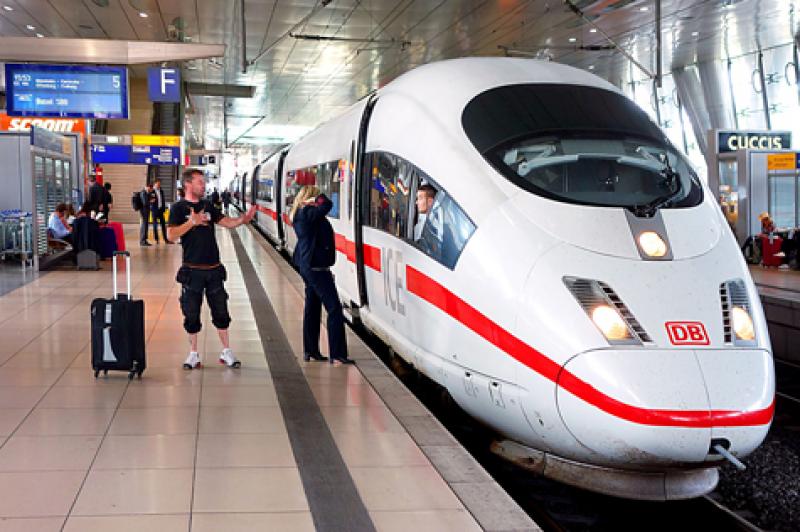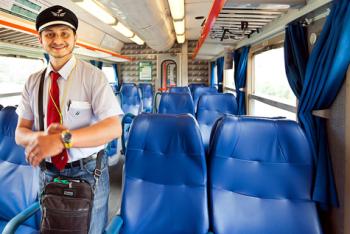Falling in love with railpasses all over again
This item appears on page 43 of the October 2019 issue.
Once an economical and easy way to allow travel around Europe, railpasses over the years had become more of a headache-inducing puzzle. But in 2019, Europe’s railpasses underwent some sweeping changes that have made them an affordable option again and much less confusing to shop for, making me nostalgic for their glory days.
As of this year, “Select Passes” — where you could mix and match countries as you liked to suit your itinerary — are gone. Now, for the most part, passes cover either all of Europe or just one country each. This means that the classic Global Pass is now not only one of the easiest options but the smart buy for more people traveling by train in multiple European countries.
During their heyday, railpasses were a way of life for European travelers. In my backpacker days, there were just two choices of Eurail Pass: one month or two months, covering most of Western Europe (17 countries), with a second-class option available only to people under 26. Over the years, as Americans started visiting Europe more often and on shorter trips, customization was in.
Travelers who did their homework could save plenty, but for most, there were so many options, it was hard to know where to begin. It got so confusing that the Global Pass almost became a thing of the past — worth considering only for those doing the whirlwind, months-long, pan-Europe backpacker trip of yore.
Now, by eliminating the customized passes while cutting the price of the Global Pass, Eurail has gone back to basics. (Certain high-speed trains still require passholders to pay extra and book ahead, but with fewer pass options to navigate, it’s less of a factor when shopping for a pass.)
Your main options now are either a single-country pass or the 31-country Global Pass. Fortunately, Global Passes are now priced to make sense for shorter trips (and are available for as few as three days of travel).
There are still some multicountry regions where passes are available and cheaper than a Global Pass for the same number of train-travel days.
For example, Eurail’s Scandinavia Pass includes Denmark, Sweden, Norway and Finland for little more than the price of a pass covering only one of those countries; the Benelux Pass is cheaper than a Global Pass for those traveling to Belgium, the Netherlands and Luxembourg, and the European East Pass — including Austria, the Czech Republic, Hungary and Slovakia — is roughly the same price as a pass that just covers Austria.
The addition of Great Britain to the Global Pass in 2019 filled a longstanding gap in its coverage of Europe. Though BritRail passes still reign for a Britain-focused trip, travelers also straying to the Continent can now use one Global Pass for the whole trip.
All European railpasses now offer options for first- and second-class travel for travelers of any age, not just “youths.” In addition to the “youth” discount (under 28 for most passes), travelers over 60 can get a senior rate on more passes than ever, saving roughly 10 percent.
The “saver” discount for travel buddies disappeared this year, which seemed like bad news at first. But when we crunched the numbers, it became clear that this year’s across-the-board dip in prices essentially gave all railpass travelers the group discount.
Now families and friends traveling together can each travel with their own passes — allowing them to split off from the group whenever they like — while still getting the best price. (Kids, however, still need to be on the same pass as an adult to get a free ride.)
Night trains throughout Europe are less common now than they once were. Rail became less desirable thanks largely to competition from budget flights that whip you to your destination faster than a train. But rail travel has the advantage of a smaller carbon footprint — and there are still benefits for night-train travelers with a Eurail pass.
Overnight trips only count as one day of travel. (As of this year, you just count the day you board the overnight train, and travel after midnight on that same train is still covered.)
In other rail news, the Eurostar train that crosses under the English Channel has added service from London to Amsterdam. (Direct service from Amsterdam to London may start later this year; until then, you’ll have to change in Brussels.)
While these changes to railpasses are big news, one thing definitely hasn’t changed in all my years of traveling: there’s still a special magic to taking trains around Europe.
Rick Steves writes European travel guides and hosts travel shows on public TV and radio. Contact Rick Steves’ Europe (Edmonds, WA; 425/771-8303, www.ricksteves.com).


